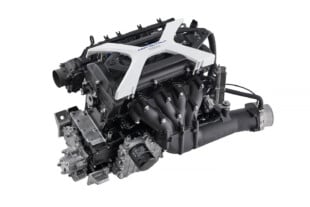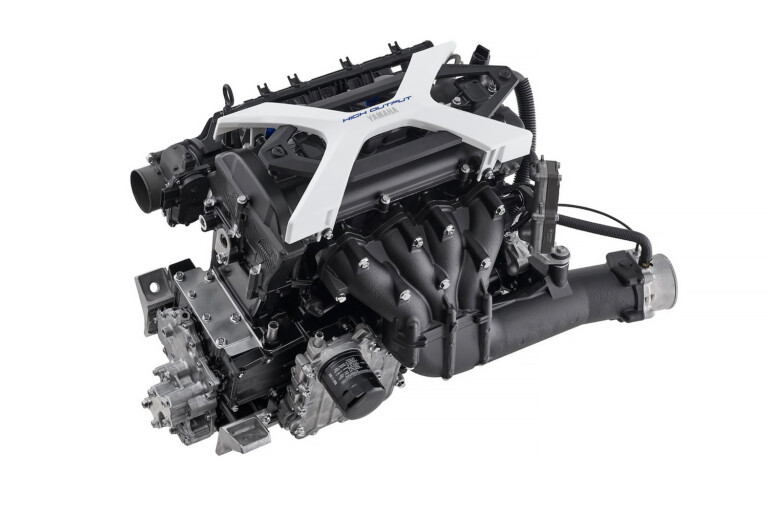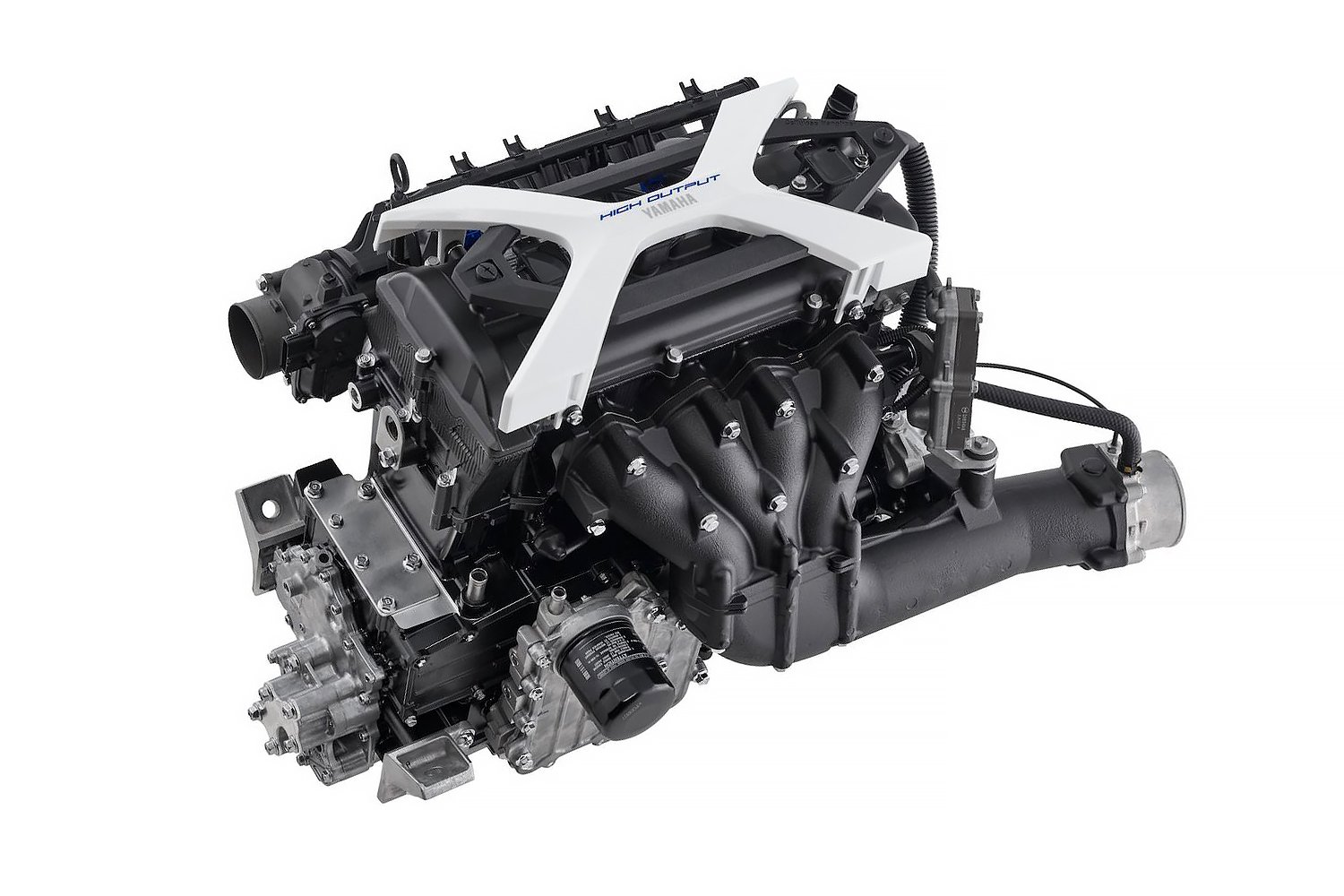 TECH5 is a regular feature where EngineLabs asks industry leaders five technical questions. This week’s guest is Jeff Stacy, president of sales and marketing at Fragola Performance Systems.
TECH5 is a regular feature where EngineLabs asks industry leaders five technical questions. This week’s guest is Jeff Stacy, president of sales and marketing at Fragola Performance Systems.
EngineLabs: What are the pros and cons of push-lock and cutter styles of hoses and hose ends? Is there a performance advantage of one over the other?
Jeff Stacy: “The pros for push-lock are light weight, ease of assembly, and low cost. The main con is that they work only in low-pressure environments; that is, 250 psi and lower. Most push-lock hoses do not have any abrasion-resistant material or fire-proof capabilities. Fragola offers both styles: with no outer sleeve material and with an abrasion-resistant cloth covering.”
 “Cutter-style hose ends and compression hose ends have no real pros and cons. The original AN design was the cutter-style hose end. This hose end works by cutting into the rubber core of the hose to help retain it. The compression-style compresses the hose between the nipple and nut for retention. Both ways work equally well. When disassembling a cutter-style hose end there will be an eighth-inch piece of the rubber hose that you will have to dig out of the hose end. You will also have to shorten the hose upon re-assembly for the hose end to find new material for the cutter to cut into.
“Cutter-style hose ends and compression hose ends have no real pros and cons. The original AN design was the cutter-style hose end. This hose end works by cutting into the rubber core of the hose to help retain it. The compression-style compresses the hose between the nipple and nut for retention. Both ways work equally well. When disassembling a cutter-style hose end there will be an eighth-inch piece of the rubber hose that you will have to dig out of the hose end. You will also have to shorten the hose upon re-assembly for the hose end to find new material for the cutter to cut into.
Performance advantage? Not really. It all depends on your budget or personal preferences.”
EL: In what situations do crimp-style hose ends work best, and which situations should they be avoided?
 Stacy: “There are no real situations that crimp is better or worse. Again it is a personal preference. There is a weight savings on a crimp hose end over a reusable hose end. Racers in the higher classes seem to prefer the look of the crimp-style hose end and the perception that it is more expensive. At Fragola our hose and crimp-style hose ends are very budget friendly.”
Stacy: “There are no real situations that crimp is better or worse. Again it is a personal preference. There is a weight savings on a crimp hose end over a reusable hose end. Racers in the higher classes seem to prefer the look of the crimp-style hose end and the perception that it is more expensive. At Fragola our hose and crimp-style hose ends are very budget friendly.”
EL: Are teams looking at hoses and fittings for weight reduction? Can you provide an example of a before-and-after situation and how much weight was reduced with a change in the hoses and fittings?
Stacy: “Teams are always looking for ways to save weight. Our sport crimp and black nylon hose are very popular in both the oval-track and drag-racing markets. The biggest weight savings comes in the actual hose itself. Our -10 AN steel-braided 3000 series hose weighs .23 pounds per foot. In the same size hose in the black premium nylon hose, the weight is .15 pounds per foot. Doesn’t sound like a huge savings until you calculate how many feet of hose is used on a car. It is very easy to use well over 30 feet of -10 just on the fuel side of a car. That is almost 2.5 pounds in savings right there. The beauty is our premium black nylon hose is very budget friendly, and if you are building a new car you need fuel lines anyway. One customer sent all his steel braided-hose and reusable fittings lines to us. We duplicated them in the premium black nylon along with the sport crimp fittings. This was for a dirt late model with a 5-stage dry sump. When it was all finished we saved him 12 pounds.”
EL: I re-plumbed my fuel system and now my car smells like gas all the time. What did I do wrong and how can I fix it?
 Stacy: “In all reality you did nothing wrong. All rubber-cored hose will permeate fuel smells. This is why the OEMs have tried to use as much hard line on cars for years. We have been working on our real street series of hose and hose ends to try to fix this issue for the customers. We had PTFE-cored hose for a long time but no one had an attractive hose end for it. You either had to use a steel hose end that looked like it came from a hardware store or use a crimp-style hose end. Fragola came out with an attractive, lightweight aluminum hose end that would work on a PTFE-cored hose. The PTFE core does not allow any fuel permeation and therefore eliminates the fuel smell. It is available in size -6 through -10 and will be available in -12 this summer. The hose ends are black and come in straight, 30, 45, 60, 90, 120, 150 and 180-degree configurations.”
Stacy: “In all reality you did nothing wrong. All rubber-cored hose will permeate fuel smells. This is why the OEMs have tried to use as much hard line on cars for years. We have been working on our real street series of hose and hose ends to try to fix this issue for the customers. We had PTFE-cored hose for a long time but no one had an attractive hose end for it. You either had to use a steel hose end that looked like it came from a hardware store or use a crimp-style hose end. Fragola came out with an attractive, lightweight aluminum hose end that would work on a PTFE-cored hose. The PTFE core does not allow any fuel permeation and therefore eliminates the fuel smell. It is available in size -6 through -10 and will be available in -12 this summer. The hose ends are black and come in straight, 30, 45, 60, 90, 120, 150 and 180-degree configurations.”
EL: What’s the biggest mistake do-it-yourselfers make when assembling their own hoses and fittings?
 Stacy: “They do not use enough lube when assembling them. I always use light oil to lube the nipple of the hose end, and I like to use anti-seize on the threads when assembling the hose end. You will feel the hose end physically getting hot when you are screwing it together. The nice thing about the anti-seize is it keeps the aluminum parts from galling together. This way if you ever wanted to disassemble the parts you can and reuse them. Also, DIY’ers do not have the proper tools to assemble them. An inexpensive pair of vice jaws, a nice cutoff wheel and a good set of open-end wrenches will make your experience much better.”
Stacy: “They do not use enough lube when assembling them. I always use light oil to lube the nipple of the hose end, and I like to use anti-seize on the threads when assembling the hose end. You will feel the hose end physically getting hot when you are screwing it together. The nice thing about the anti-seize is it keeps the aluminum parts from galling together. This way if you ever wanted to disassemble the parts you can and reuse them. Also, DIY’ers do not have the proper tools to assemble them. An inexpensive pair of vice jaws, a nice cutoff wheel and a good set of open-end wrenches will make your experience much better.”


















